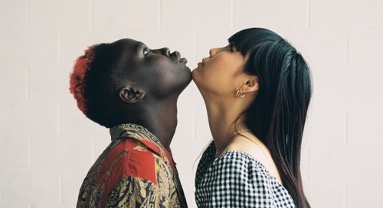This article is part of a larger series that focuses on diversity and equity in marketing. As a company, we are committed to identifying actions we can take in the fight against racism and injustice, and elevating BBIPOC voices is paramount to inspiring change. Follow along and read other posts in this series here.
This post is authored by Hava Billen, Classroom Educator for Selligent Marketing Cloud.
The first step in a marketing campaign lifecycle is to identify the target group and adapt the offer to match the audience characteristics.
Target group identification has evolved. Lately, technology has enabled marketers to collect a tremendous amount of customer data. Thanks to marketing automation platforms, customer behavior tracking and analytics tools, and customer data platforms, marketers have access to a 360-degree view of the customer.
Collectively, big data, combined with new methodologies for data processing and analysis, has enabled marketers to deploy new models for audience segmentation with predictive capabilities based on artificial intelligence (AI) algorithms.
This AI goes as far as predicting future consumer purchase behaviors, thanks to browser cookies, mobile geo-location positioning, online browsing history, social media sharing, brand likes, and online shopping experiences.
Hyper-personalization is expected by all consumers
The hyper-personalization concept, in essence, provides an opportunity for marketers to deliver real-time, anywhere-anytime content and customer experience at an individual level.
Marketers today know way more about customer identities, lifestyles, behaviors, habits, and preferences than customers know about themselves.
Yet research by the Geena Davis Institute on Gender in Media found that 54% of consumers surveyed do not feel culturally represented in online advertising. And 71% of consumers expect brands to promote diversity and inclusion in their online advertising.
The analysis shows that there are still big issues around representation of what are called “minority” groups:
- Women are 14.1 times more likely to be shown in revealing outfits and 6.9 times more visually or verbally objectified.
- Men are 1.4 times less likely to be shown happy and 2.4 times more likely to be shown angry.
- Only 1.1 % of online ads researched represent people with disabilities.
- Only 0.3% of online ads included the LGBTQ+ target group in their ads (let us not forget that this particular group has immense purchasing power).
These numbers clearly tell us that there is an enormous opportunity for marketers to tap into. In an automated world, get human – and let your target groups identify themselves with your brand efforts.
Today more than ever, the case is compelling! It is evident that online campaigns that have more diverse representation have a higher recall rate: 90% of ads that featured a diversity strategy experienced higher recall rate.
How can Diversity, Equity, and Inclusion act as a brand differentiator?
Firstly, what is Diversity, Equity, and Inclusion (DEI)?
Diversity ensures that a marketer invites everyone to the party. In other words, the message and offer are designed for a diverse target group.
Equity in marketing terms can be interpreted as being fair to your audience. This fairness can be manifested via delivering your offer on diverse channels so that everyone has the same chance at that offer. This part of the DEI concept is relative innate for marketers; however, there are still some gaps to be addressed (e.g., an elderly person who is not on Instagram or TikTok may never have the opportunity to learn more about the trendy Gen Z-focused offers on healthy food, yoga retreats, or online shopping experiences.)
Inclusion enables that everyone has the same chance for consuming an offer. A visually impaired person can read the offer; a person with hearing loss can understand what you communicate in your videos; a gay couple can relate to your “romantic couple weekend away” banner; a person who practices a different religion does not feel insulted by your assumption that Easter is a celebration for everyone.
Why should we be talking about Diversity, Equity, and Inclusion (DEI)?
Let’s continue with some fact-checking. In the summer of 2019, The Female Quotient partnered with Google and Ipsos and surveyed more than 3,000 consumers in the US from various backgrounds to get insights about brand perception, based on their advertising and marketing diversity and inclusion efforts. At a high level, the outcome was:
- People are more likely to purchase a product if they consider it diverse and inclusive.
- 64% of those surveyed took action after seeing a diverse and inclusive ad.
- 69% of Black consumers say they are more likely to purchase from brands with advertising that positively reflects their race/ethnicity.
- 71% of LGBTQ consumers said they are more likely to interact with an online ad that authentically represents their sexual orientation.
Creating a marketing strategy that incorporates diversity, equity, and inclusion practices can bring more loyal customers and expose your brand to a much larger market.
Consider, too, that 70% of consumers expect brands to take a public stand on social and political issues. “Like a Girl,” a 2015 Super Bowl spot for Procter & Gamble’s Always brand, is one that jumps immediately to mind as a good example. Here are some others:
- Nike’s recent campaigns have amplified the voices of underrepresented communities with its series of ads under the campaign titled “Until We All Win,” which aims to uplift indigenous people, LGBTQIA, and athletes.
- Dove has always been a brand that supported women of color and women of all sizes. The brand’s “Real Beauty” campaign has attempted to disrupt the standard of beauty which is portrayed every day on media.
- L’Oréal Paris launched a video campaign, “Your Skin, Your Story,” featuring a diverse blend of individuals and illustrating their individual skin stories, empowering women to feel comfortable in their skin.
- Vodafone has also expressed its support for diversity with its campaign “Belong,” where it celebrates diversity.
When a brand takes a stand on DEI, it immediately builds a positive brand perception in consumers’ eyes. This links to an increase in brand effectiveness, and significantly lifts purchase intent and loyalty.
Marketing practices that serve diverse audiences are inclusive and enable everyone to have the same chance to consume an offer.
Marketers have great potential to tap into diverse groups of people and match their needs by implementing marketing practices that are diverse, inclusive, and give everyone a fair chance of accessing the offer.
How can you put this into practice?
- Build offers that are accessible in your email marketing, so you can reach an audience from wide backgrounds, capacities, languages, and cultures.
- Highlight real stories of people from all walks of life. Storytelling is a powerful tool in marketing. Each customer is a unique individual with a unique story and motivation to consume a product or service. Include this in your brand. Tell a story that authentically speaks the language of your consumers – and spark even more interest among others.
- Include all faces in your campaign visuals and video assets: including POC (People of Color), LGBTQIA, Baby Boomers, Gen X, Gen Y, and Gen Z.
- Use non-assumptive language in your marketing and graphics.
- Use diverse channels to reach the widest possible audience and ensure that everyone has the same chance to access your offer.
- Empower underrepresented groups. Build campaigns and offers which show support for these groups.
- Abolish prejudices by highlighting the damage prejudice does and the exclusion it creates.
- Develop diverse audience personas to ensure your marketing efforts do not operate from a homogenous persona point of view, but that they reflect the diverse characteristics that are important to your audience and/or your business.
Consumers expect brands to be inclusive and reflect the reality of their lives in advertising.
On an ending note, organizations with inclusive cultures are two times more likely to exceed financial targets, three times as likely to be high performing, six times more likely to be innovative and agile, and eight times more likely to achieve better business outcomes.
Wrap up
Finally, if a marketer wants to serve a diverse market, it must embrace diversity from within. It must walk the talk and sensitize its own company to find new diverse sources of talent to understand customers better and thereby increase sales.
After all, isn’t this how diverse ideas, innovative solutions, and multiple points of view are surfaced?
 Hava Billen is a Selligent Marketing Cloud classroom trainer, educating companies how to use our intelligent marketing automation platform to better engage with their customers. Hava loves to analyze social behavior and market trends from a consumer and business point of view. She has spent the last 10 years travelling the world, working in multi-lingual, multi-cultural teams. This has allowed her to learn a lot about adapting to changes and intercultural diversity from a work and social perspective.
Hava Billen is a Selligent Marketing Cloud classroom trainer, educating companies how to use our intelligent marketing automation platform to better engage with their customers. Hava loves to analyze social behavior and market trends from a consumer and business point of view. She has spent the last 10 years travelling the world, working in multi-lingual, multi-cultural teams. This has allowed her to learn a lot about adapting to changes and intercultural diversity from a work and social perspective.
In her free time, Hava enjoys sports, outdoor activities, exploring new cuisines, wine, art, learning new languages, reading books, listening to podcasts, and laughing with her friends. Probably the weirdest thing she has ever done is to sign up for beginners figure ice skating class with 5-6 year old ladies. “Being on the skate rink with uplifting music is one of the most relaxing activities for me,” she says. “Although when I took ice skating classes with the group of young ladies, I felt really embarrassed falling down and being watched by their parents.” It’s the price to pay when you crave learning things at an older age.
Like many millennials, Hava cares about the environment and likes to contribute by choosing a vegetarian and vegan lifestyle 90% of her time. She also likes exploring brands that are eco-friendly and sustainable. She also occasionally engages in social causes such as the protection of children with vulnerable backgrounds, especially in her home country of Bulgaria.
Visit this page to see more in the series, or check back in a week for our next guest post.
Marigold is a family of global marketing technology brands including Campaign Monitor, CM Commerce, Delivra, Emma, Liveclicker, Sailthru and Vuture. By joining together these leading brands, Marigold offers a variety of world-class solutions that can be used by marketers at any level. Headquartered in Nashville, TN, Marigold has United States offices in Indianapolis, Los Angeles, New York City, Pittsburgh, and San Francisco, and global offices in Australia, London, New Zealand, and Uruguay.







